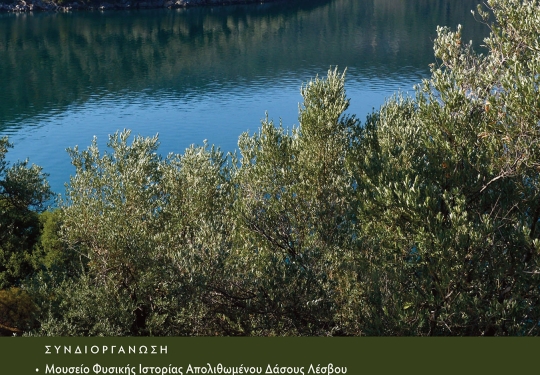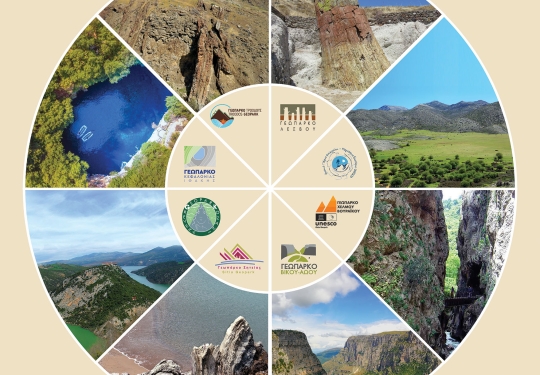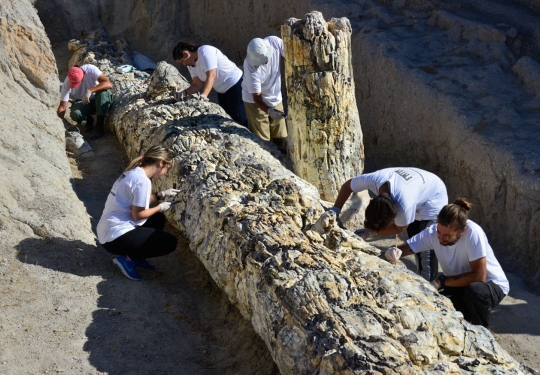Invisible Exhibits
The Natural History Museum of the Lesvos Petrified Forest presents the digital exhibition “Invisible Exhibits” with selected and commented exhibits of its collection, unknown to the public, and also unknown moments from their excavation, conservation and promotion.

Exhibition SECTIONS

Invisible Exhibits 1
18-million-year-old fossilized trunk of a subtropical tree from the Petrified Forest of Lesvos. A truly unique finding as it maintains its root system intact. It was discovered during salvage excavations at the construction site of Kaloni-Sigri road axis in 2015.
It was found in a poor condition because it was located just under the current surface of the ground, at a shallow depth, and in an area with an intense tectonic activity.
It was transferred using a special splint and was conserved at the Museum’s conservation labs with patience, persistence and many hours of work for about 4 years.
It will soon be displayed to the public after the completion of its cleaning, conservation,welding, reconstruction and restoration.
A great number of petrified tree trunks have been discovered, conserved and preserved in situ during salvage excavations at the construction site of Kalloni-Sigri road axis in Western Lesvos.
The project is one of the most impressive paleontological excavations in Greece. Implementing innovative methodologies and conservation techniques, thousands of petrified tree parts, branches and leaves were excavated, conserved and safely transferred at the Museum. Now all these amazing findings are part of its unique collections.
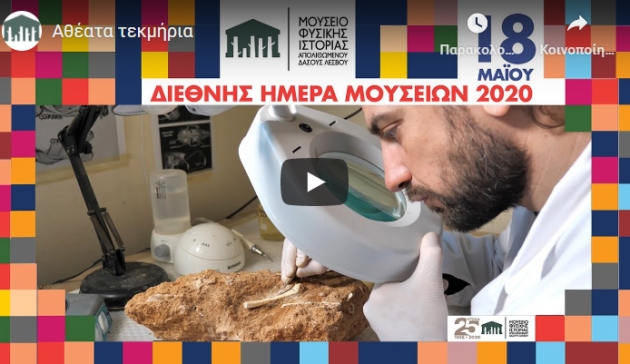
Invisible Exhibits 2
While the museum remains closed to the public, we are offering you the opportunity for a glimpse behind the scenes. Discover the unknown aspects of the Museum and especially the unknown moments from fossil excavation, conservation, maintenance and promotion in Lesvos- Unesco Global Geopark.
Lesvos offers a rich geo-diversity and geological monuments of unique value. The paleontological findings are located inside cohesive sedimentary formations. Therefore, the Museum’s experienced conservators have to implement specialized methods in order to detach the bones and teeth of the animals that lived in Lesvos million years ago. Afterwards, it is time for the Museum’s scientists to study and document the findings.
Understanding our planet’s history, we can overpass every difficulty with strength and optimism.

Invisible Exhibits 3
Teeth of an alligator that lived in the area of Lapsarna in Western Lesvos 18,5 million years ago.
These double canine teeth alligators were relatively small in size, about 2 meters long. They also had bony scales that covered their neck, back, abdomen and tail.
They used to live at Lake Gavathas and feed on small aquatic animals, fish, crustaceans and mollusks.
Their conical pointed teeth helped them to capture and kill their prey. They were the most dangerous predators in the subtropical lake.
The teeth, bones and bone scales were discovered during 2007-2008 as part of a systematic research to identify the animals that lived in the area of the Petrified Forest and were identified by Dr. Katerina Vassiliadou, Paleontologist of the Museum of Natural History of the Petrified Forest of Lesvos.
These findings are of unique scientific value as they are just the second evidence of the presence of crocodile species in Greece and the only one from the period of the Early Miocene.
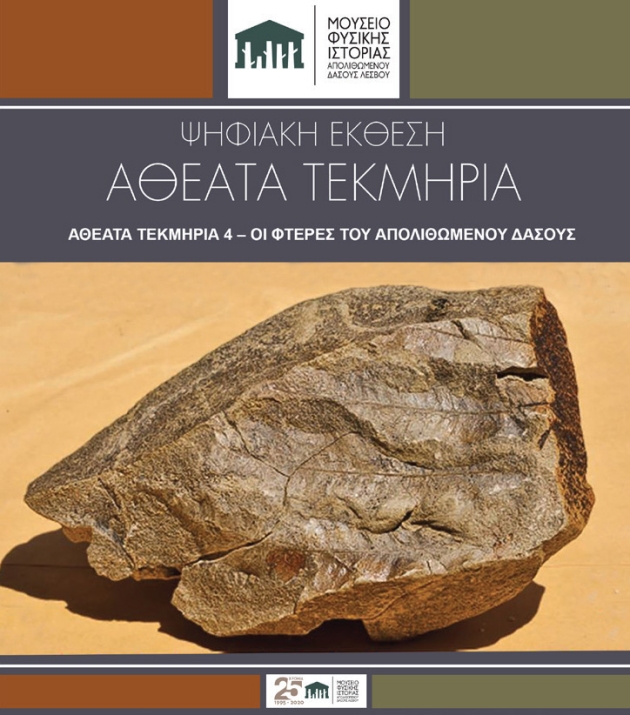
Invisible Exhibits 4
Leaves of a rare fern that lived in the area of Western Lesvos 18.5 million years ago. It was found at Plaka Park, south of Sigri, and is a member of a family of primitive plants. The presence of Pteridophytes and especially of this rare fern, called Pronephrium (Pronephriun striacum), is without doubt a unique finding.
The Petrified Forest of Lesvos offers a great variety of plants which mainly belong to the conifers and flowering plants family.
Pteridophytes appeared about 360 million years ago and dominated the surface of the earth during the Carboniferous period. Their spread gradually declined as the conifers and flowering plants dominated.
Pteridophytes have roots, stem and leaves, but they produce neither flowers nor seeds. They reproduce and disperse via spores, usually in under surface of leaves.
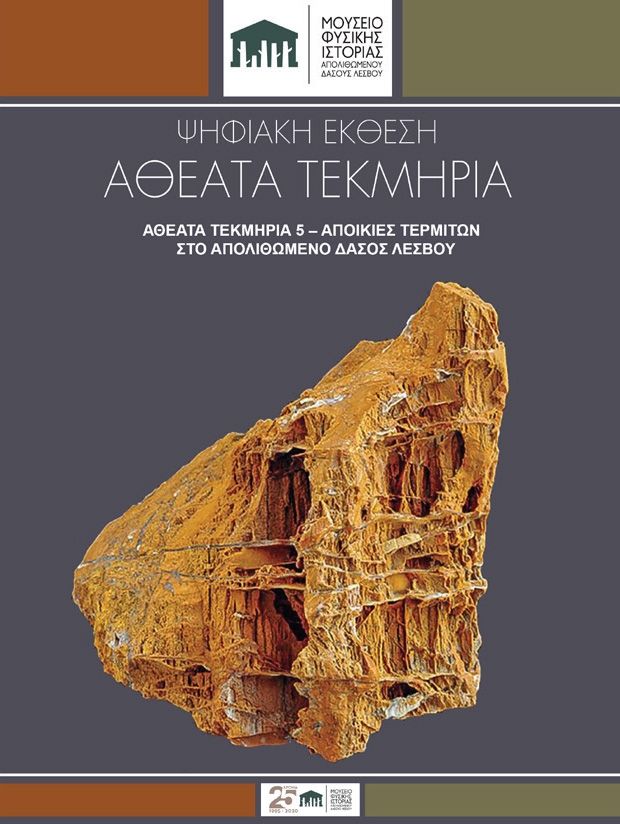
Invisible Exhibits 5 – Termite Colony at the Petrified Forest of Lesvos
18.5-million-year-old petrified trunk of a coniferous tree from the Petrified Forest of Lesvos, with bright colors. It has also preserved the characteristic features of wood. Inside the trunk we can detect impressive traces of Wood-boring insects (Xylophagous/ Saproxylic).
We can distinguish the tunnels inside the wood, that were preserved as empty spaces during the fossilization process, which transformed the wood of the trunk into opal.
It is a unique finding as it proves the presence of insects at the Petrified Forest by preserving traces of Wood-boring insects (termites) inside the fossilized wood. Wood-boring insects infest the tree, causing holes that lead to tunnels inside the wood. From the type of wood infestation we identify the termites.
Secondary white quartz veins through the trunk mass are evidence of the continuation of volcanic activity in the area where the tree was fossilized.

Invisible Exhibits 6
At the subtropical Petrified Forest of Lesvos, a great number of cinnamon trees and laurel trees used to prosper, based on the findings of the excavations. In many fossil-bearing sites in western Lesvos, within layers of volcanic ash, many fossilized trunks and leaf imprints of the Laurel family ( Lauraceae) have been found.
Laurels are usually shrubs or small trees. Their leaves are lanceolate, with a small stem. Cinnamon tree leaves (Cinnamomum polymorphum ) are often found in the same sites.
In one of the most rich fossil-bearing sites in Western Lesvos, a great number of laurel and cinnamon tree branches and trunks has been discovered.
The branches were broken by the expansion of gases during the volcanic eruption. Similar volcanic eruptions create cataclysmic pyroclastic flows that travel at speeds of hundreds of kilometers per hour. The pyroclastic materials moved on the slopes of the volcanic cone, in a western direction, sweeping the vegetation. The tree trunks and branches were swept away by a flow of mud and ash.
During the excavations a great number of impressive branches were revealed. The way the are lying in the area give us information on the process of the volcanic eruption and the fossilization.
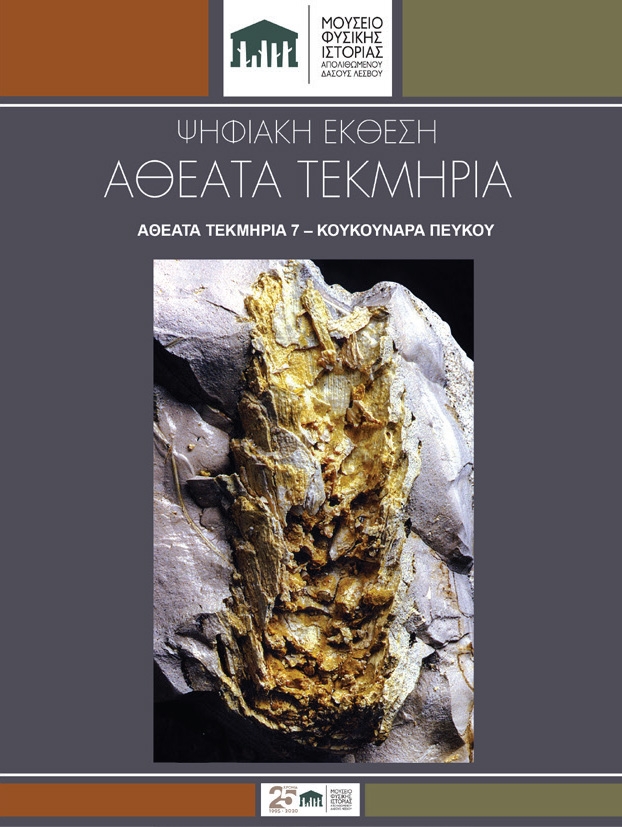
Invisible Exhibits 7 – Pine Cones
Pine Cones inside layers of volcanic ash from the area of Sigri. We can detect the details of the internal structure of the fruit that has been impressively preserved inside the volcanic materials produced by the volcanic eruptions in Lesvos 18.5 million years ago.
Fossilized tree fruits are rare findings in the area of the Lesvos Petrified Forest. The conifer pine cones are the most usual findings of fruits.
The fossilized tree trunks of the pine family are among the best preserved exhibits. This family includes characteristic species of pines and primitive forms of pine.
Pines and primitive pines form small clumps at the parks of the Lesvos Petrified Forest.
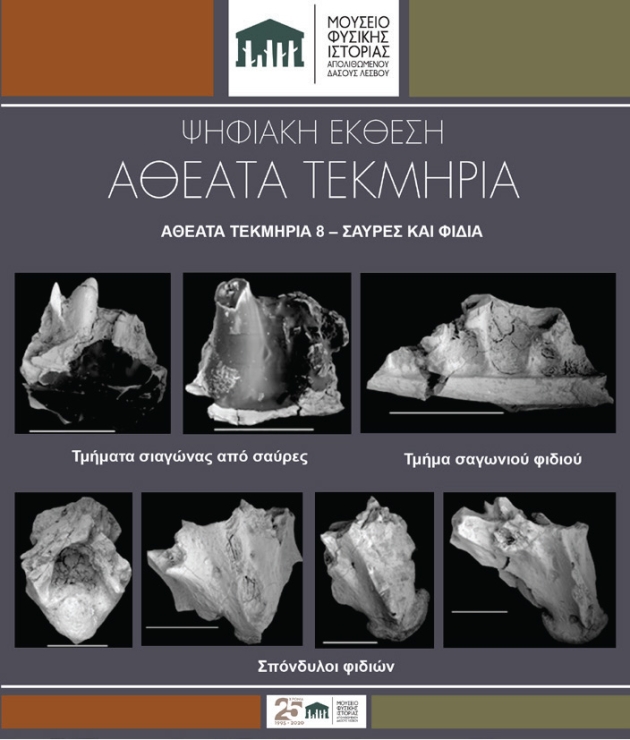
Invisible Exhibits 8-Lizards and snakes
Jaw bones and vertebrae of snakes and jaw parts of lizards were found inside lake sediments at the area of Lapsarna in Western Lesvos. The findings provide important information about the reptile fauna of Lesvos 18.5 million years ago.
The findings were identified by Dr. Katerina Vassiliadou, Paleontologist of the Museum of Natural History of the Petrified Forest of Lesvos. Utilizing the reptile findings and many other plant and animal findings from the area, we are able to reconstruct the ecosystem of the subtropical lake of Gavathas during the Miocene.
Around the lake, small and large reptiles used to crawl on the ground and upon the trees, seeking their prey.
Using their sense of smell, various species of snakes search for insects, small amphibians or even mammals, birds or eggs to eat. The scales that cover their body glow under strong light.
The vibrant green colors of various species of lizards offer them camouflage among the dense vegetation. But when a predator is near, a lizard sacrifices its tail, which has a more intense color to attract attention. The moment the predator goes for the tail, the lizard breaks off it. The tail continues to move, deceiving the predator and giving the lizard time to escape. Within a few months, a new tail has grown for the next difficult moment.
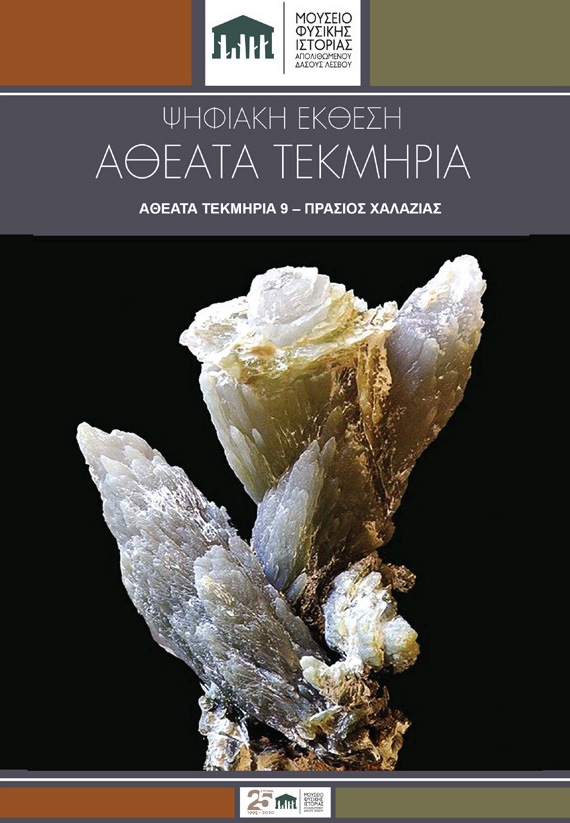
Invisible Exhibits 9 – Prase Quartz
Impressive crystals of Prase (Prasio or Praseum Quartz of Serifos )
Green Quartz is considered particularly rare in nature. This specimen comes from the island of Serifos.
Quartz is one of the most common minerals in nature and in liquid form is involved in the replacement of organic wood and its fossilization. Quartz has a variety of forms in nature, some of which are very rare as semi-precious stones, such as crystal quartz amethyst, smoky quartz, citrine, prase, rose quartz.
Prase Quartz was named after the greek word /praso/ (meaning leek). It belongs to the the tectopyrite minerals (SiO2 group). Excellent specimens, such as this, can be found in museums around the world! Prase is one of the rarest varieties of quartz and one of the most valuable and is found in Serifos.
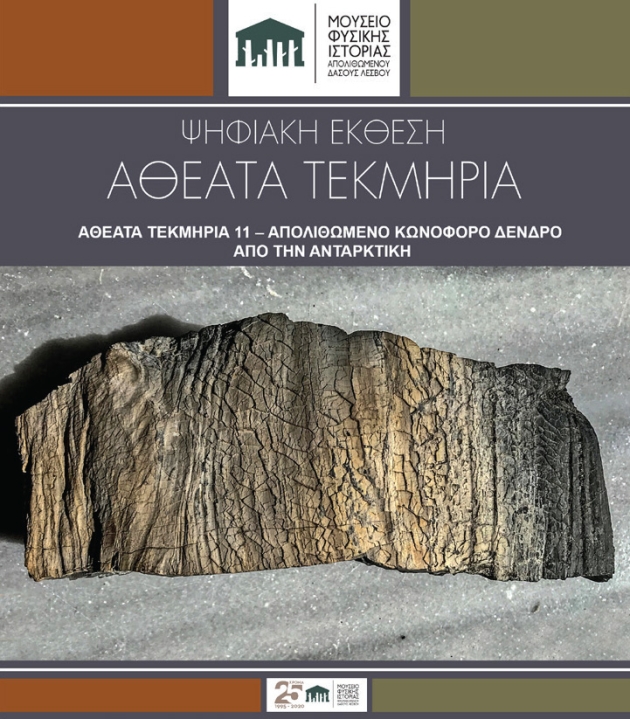
Invisible Exhibits 11 – Fossilized coniferous tree from Antartica
Part of a fossilized coniferous tree trunk from Antarctica. The fossil was donated to the Natural History Museum of the Lesvos Petrified Forest by Mr. George Kazantzis, who was born in Lesbos and today lives in Australia.
The discovery was made by Dr Howard Brady in 1979 in the Mt Brooke area of the Quartermain Mountains, in Vicroria Land, on the large plateau of Antarctica.
The fossil was found in good condition and retains unique features of both the interior and exterior structure of the wood.
It is a really rare finding as it proves the existence of a rich forest in Antarctica during the Permian Period, about 265 million years ago while contributing to the determination of the past climate conditions that prevailed in Antarctica at that time.
The discovery of this fossil is also an evidence of the movement of the Earth’s lithospheric plates as it proves that Antarctica, which is now completely covered by ice, was located further north during the Permian Period and its surface was covered by a rich coniferous tree forest.
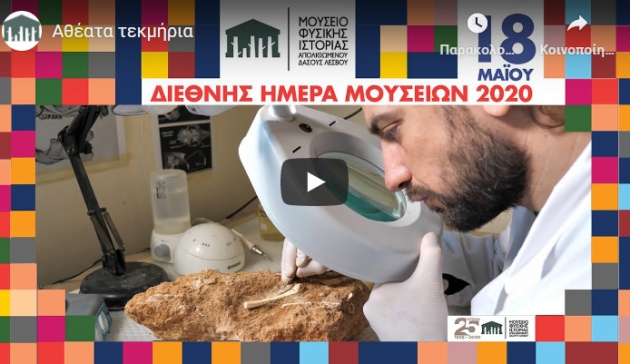
Invisible Exhibits 12 – Fossil promotion
Promoting the rich flora of the Lesvos Petrified Forest!
Impressive leafy horizons and leaves from the new fossil-bearing sites in the Lesvos Petrified Forest offer valuable information about the unique forest ecosystem.
A large number of fossilized leaves were found during the salvage excavations carried out at the construction site of the new Kalloni – Sigri road. These highly sensitive fossils are unique findings of our natural heritage.
Due to their great scientific value and their sensitivity to external conditions, they were carefully transported for protection reasons from the excavation site to the Museum’s laboratories, where the process of their cleaning and conservation has begun.
The art and science of conserving the plant fossils of the Lesvos Petrified Forest promotes the rich flora of the Petrified Forest while at the same time it is a basic condition for their effective protection and preservation.
The conservation of the fossil leaves is carried out by a special team of conservators using innovative preservation techniques, aiming to preserve the fossils, slow down their decay and in some cases restore their shape so that they can then be exhibited to the public.
These impressive and at the same time extremely rare and sensitive leaf fossils, after careful cleaning and conservation, reveal to us the secrets of the environment, the space and the climate of the area in which they lived about 18 million years ago.
Let’s discover the rich flora of the Lesvos Petrified Forest, but also the secrets of its preservation and promotion.

Invisible Exhibits 13 – Treasures in the mud
A great number of branches and twigs is revealed by the systematic and careful excavation and conservation of the unique findings brought to light by the excavations in the Lesvos Petrified Forest.
They radiate like precious metals, as they are being revealed from the layer of fine-grained volcanic ash that surrounds them.
After a large volcanic eruption that destroyed the forest, the branches of fruit and coniferous trees were swept away by a terrible mudslide that trapped them in narrow valleys where they remained and were covered by the materials of later volcanic eruptions.
Today, at the Petrified Forest, rich horizons of fossils are revealed, full of impressive branches, leaves, fruits, roots and trees.
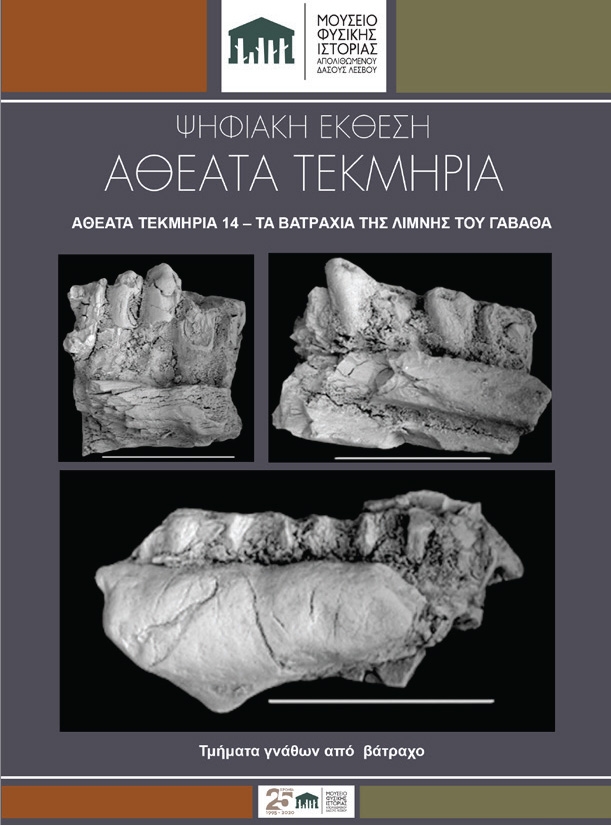
Invisible Exhibits 14 – The frogs of Lake Gavathas
Parts of jaws from various species of frogs were found inside the sediments of Lake Gavathas. The findings were identified by Dr. Katerina Vassiliadou, Paleontologist of the Museum of Natural History of the Lesvos Petrified Forest.
The presence of various species of amphibians around and in the waters of the subtropical lake was particularly common in Lake Gavathas 18.5 million years ago.
The findings provide important information about the amphibians of Lesvos 18.5 million years ago.
Utilizing the amphibian findings and many other plant and animal findings from the area, we are able to reconstruct the ecosystem of the subtropical lake of Gavathas during the Miocene.
During the wet hot nights, the cloaks of various species of frogs echoed in the area. They trapped insects with their long tongues to feed. Adult frogs lived mainly in the soil around the lake. However, the embryos as well as the young ones (tadpoles) lived in the waters of the subtropical lake until they reached the stage of their transformation into adults.
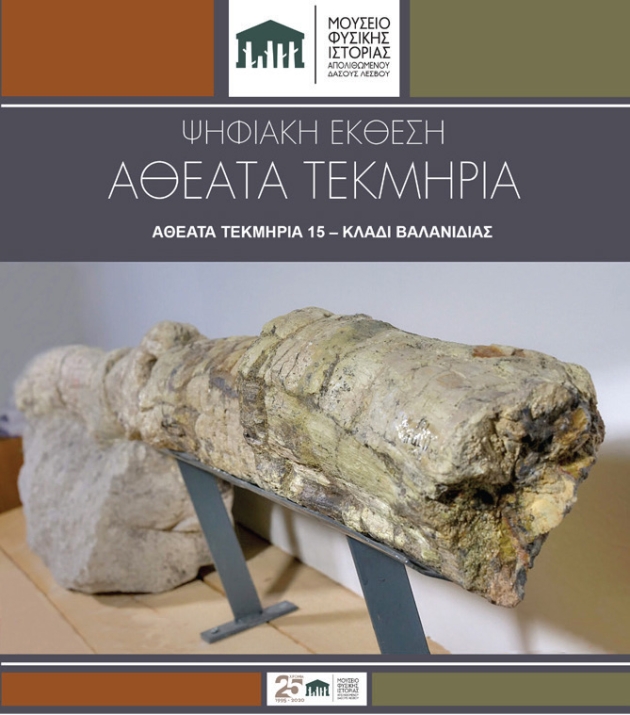
Invisible Exhibits 15-Oak Branch
An oak branch has been revealed through a layer of volcanic pyroclastic materials inside which it was preserved for more than 18 million years. The careful excavation of the findings reveals a large number of impressive twigs. The way they are lying in space provides information on the process of volcanic eruption and fossilization.
At the subtropical forest of Lesvos a large number of trees belonging to the Fagaceae family flourished. They were found during salvage excavations in the area of the Petrified Forest in Sigri.
Various species of oak, chestnut and beech have been preserved within the volcanic ash-horizons and have been identified in fossil-bearing sites of the Lesvos Petrified Forest.
A great number of fossilized trunks and leaf prints of the family Fagaceae have been found in many fossil-bearing sites, along with fossils of the Lauraceae family.
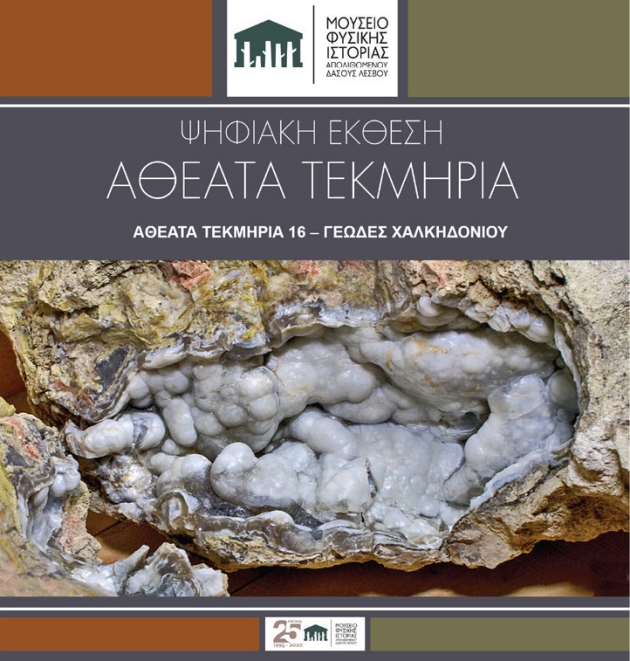
Invisible Exhibits 16 – Chalcedony Geode
Impressive Chalcedony geode from the area of Acrochira at the Lesvos Petrified Forest of Lesvos. The original cavity was formed in volcanic rocks and its walls were later covered internally with mammilary and botryoid Chalcedony forms.
Chalcedony is a form of quartz and is often found in volcanic areas filling cavities, cracks and branches of volcanic rocks. It has a hardness of 7 and is a microcrystalline mineral with semitransparent or translucent crystals. It has a waxy luster and its color is yellow to white-yellow.
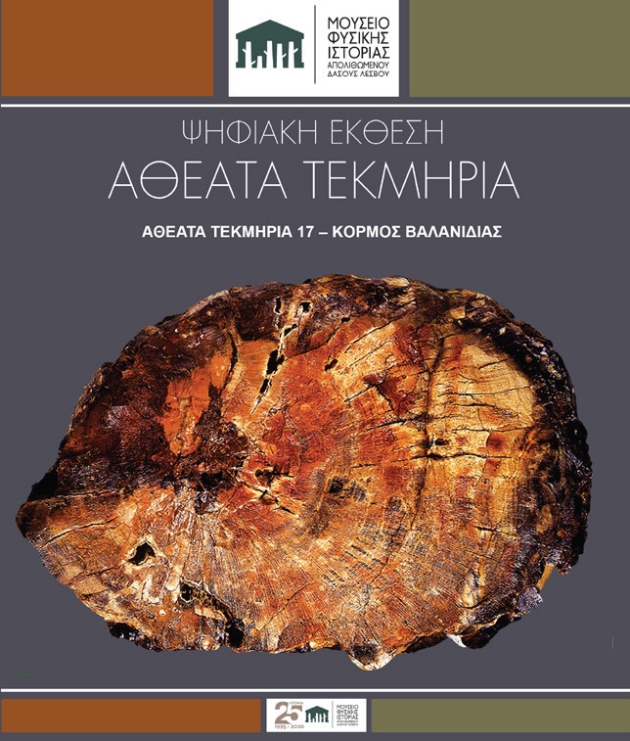
Invisible Exhibits 17 – Oak trunk
Cross-section of fossilized oak trunk with excellent preservation of its wood characteristics.
During the fossilization process, the trunk acquired its striking colors from metal oxides that colored the chalcedony, the silica mineral that replaced the wood.
The trunk comes from the area of the Park of the Lesvos Petrified Forest in the location Bali Alonia.
We can detect the characteristic radial rays that start from the center of the trunk and develop towards its periphery. The growth rings inside the trunk are also visible.
The trunk appears flattened due to the pressure it received when it was covered by layers of volcanic ash and pyroclastic materials from volcanic eruptions that caused its fossilization 18.5 million years ago.
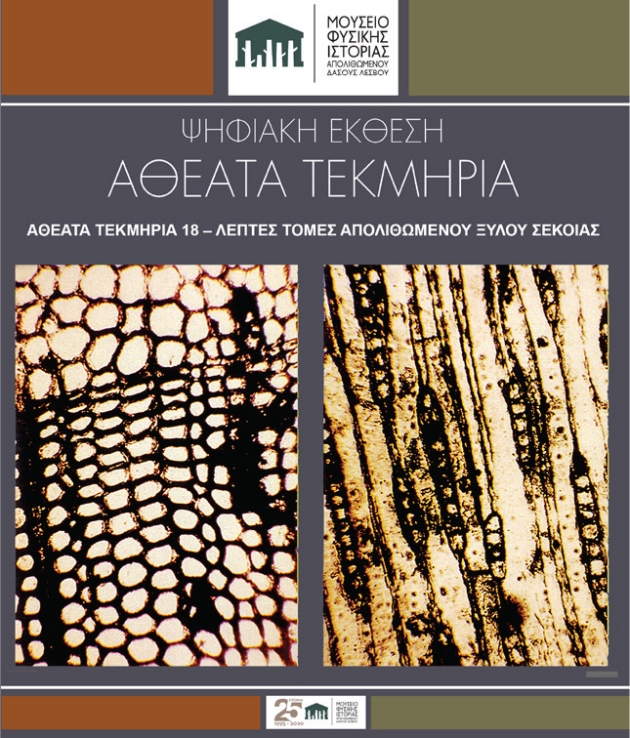
Invisible Exhibits 18 – Thin Sections of fossilized sequoia wood
Successive thin sections of fossilized sequoia wood [cross section (left), tangent section(right)]. Using the microscope allows the study and identification of fossil species. The study is based on the comparison of the characteristics of the fossilized wood with wood sections of modern-day trees. The comparative study reveals the genus and species of the fossil plant. The detailed sections led to the identification of the fossilized trunk as an ancestral sequoia (Taxodioxylon albertense).
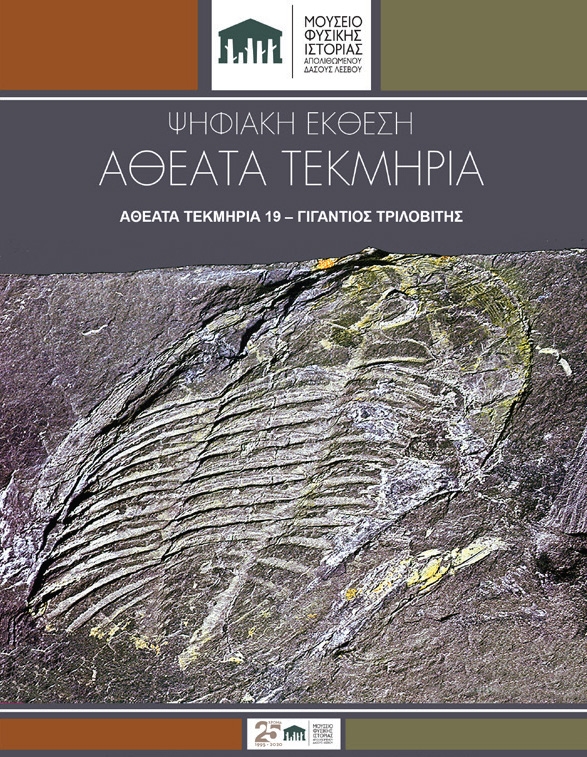
Invisible Exhibits 19 - Gigantic Trilobite
Impressive fossil of a giant trilobite of the species Ogyginus forteyi, 465 million years old (Ordovician Period), from the Canelas in the Arouca area of the UNESCO Global Geopark, in Portugal.
The beginning of the Phanerozoic Era was accompanied by great evolution of the living world at sea, land and air. During the Cambrian Period (542-488 million years ago), the Trilobites dominated the sea. They are the earliest-known animal organisms (marine arthropods) without an internal skeleton, but with a hard outer shell and with sizes ranging from 1 mm to 70 cm. They were geographically dispersed and their fossils have been found on all continents. They disappeared at the end of the Paleozoic Age (251 million years ago).

Invisible 20- Teeth of a Myoxus (dormouse)
Chewing teeth of the upper and lower left jawbone of a myoxus, a small mammal that lived in the area of the Petrified Forest.
They were found in the lake sediments of the area of Lapsarna in Western Lesvos. The findings provide important information about the reptile fauna of Lesvos 18.5 million years ago.
The findings were identified by Dr. Katerina Vasileiadou, Paleontologist of the Natural History Museum of the Lesvos Petrified Forest.
Fossil research shows that in Lesvos, during the Early Miocene lived a species of myoxus, of the genus Glirulus diremptus, relative of the present-day Japanese dormouse. It was small in size and fed on fruits, berries, eggs and small insects.
Like his present-day relative, it was lonely and nocturnal. The bones morphology of its limbs allowed it to climb and even run upside down on the branches.
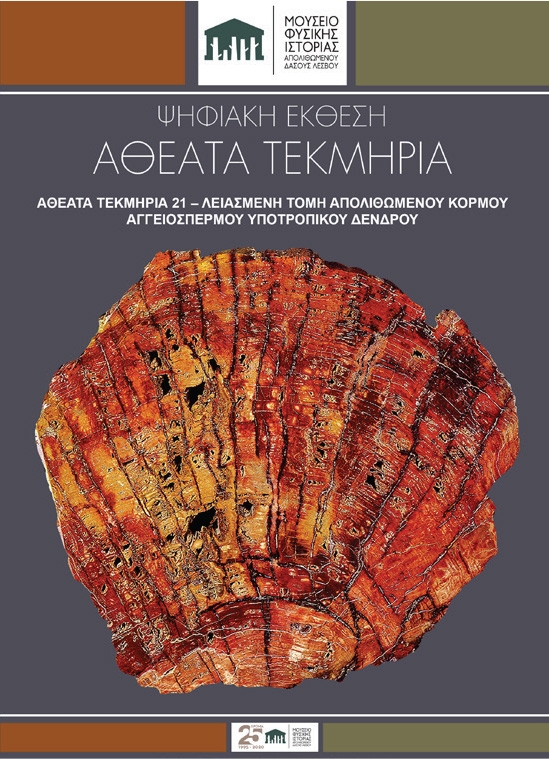
Invisible Exhibits 21- Smoothed section of a fruit tree
Smoothed section of a part of a fossilized fruit tree trunk. We can detect the growth rings and characteristic elements of the wood structure. Its dimensions allow us to estimate the diameter of the trunk at 150 cm.
The striking colors are due to the oxides of iron, copper and other minerals that colored the chalcedony, the silicon mineral, which replaced the wood molecules.
A large variety of fruit plants was part of the subtropical flora of the Lesvos Petrified Forest.
The parts of fossilized fruit tree trunks are of great beauty and scientific value.They provide valuable information on paste climate conditions in the Northern Aegean region 18 million years ago.
Other Exhibitions

